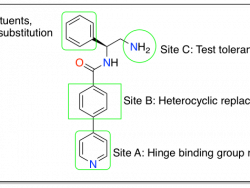Introduction to my KCGS CDK family project
At the SGC-UNC we are interested in building a set of inhibitors that “covers” the whole kinome. Here’s a reference that talks about our plans for the Kinase Chemogenomic Set (KCGS): http://journals.plos.org/plosone/article/related?id=10.1371/journal.pone.0181585. We are building the set with what we call “narrow spectrum” inhibitors – inhibitors that inhibit only a small set of kinases. To help Read More …

